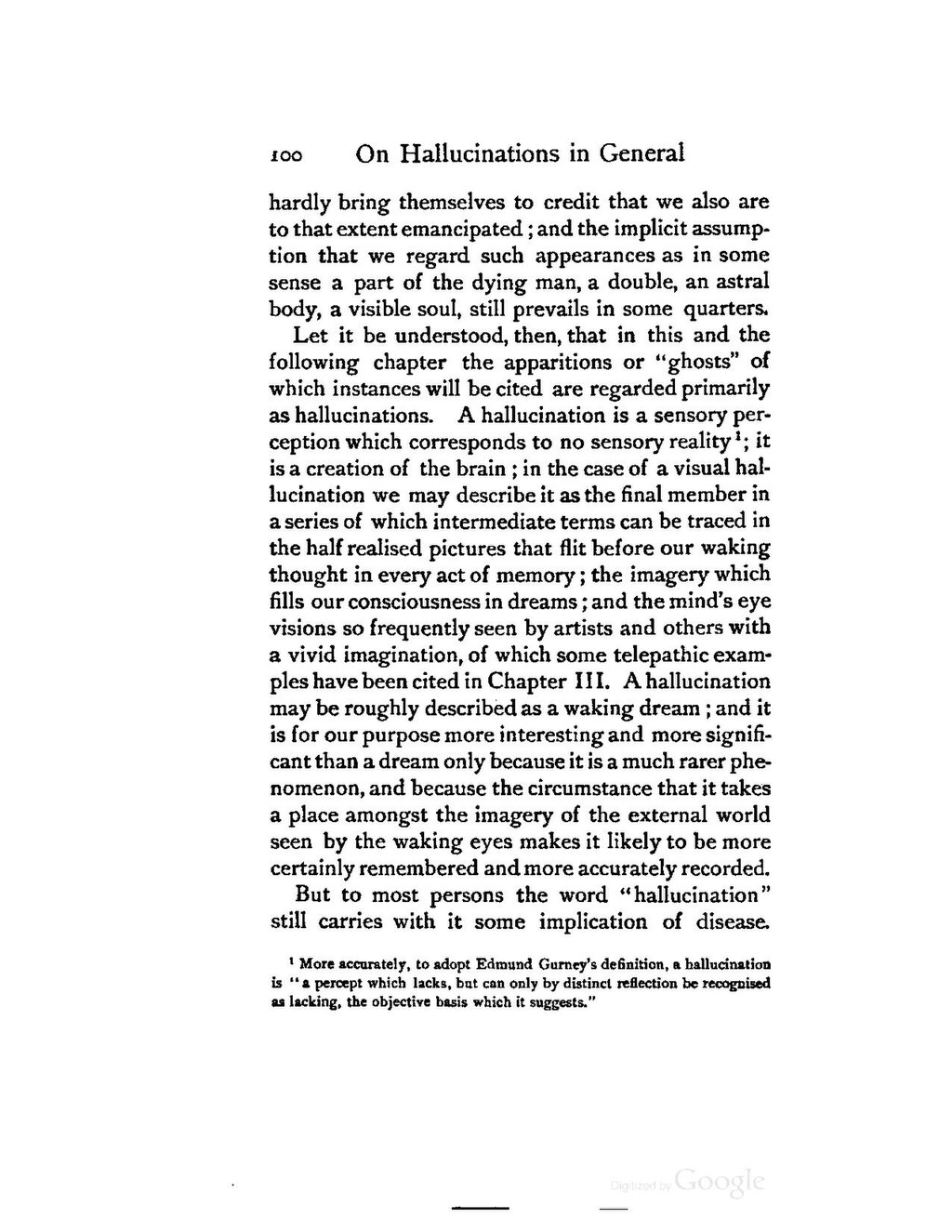hardly bring themselves to credit that we also are to that extent emancipated; and the implicit assumption that we regard such appearances as in some sense a part of the dying man, a double, an astral body, a visible soul, still prevails in some quarters.
Let it be understood, then, that in this and the following chapter the apparitions or "ghosts" of which instances will be cited are regarded primarily as hallucinations. A hallucination is a sensory perception which corresponds to no sensory reality[1]; it is a creation of the brain; in the case of a visual hallucination we may describe it as the final member in a series of which intermediate terms can be traced in the half realised pictures that flit before our waking thought in every act of memory; the imagery which fills our consciousness in dreams; and the mind's eye visions so frequently seen by artists and others with a vivid imagination, of which some telepathic examples have been cited in Chapter III. A hallucination may be roughly described as a waking dream; and it is for our purpose more interesting and more significant than a dream only because it is a much rarer phenomenon, and because the circumstance that it takes a place amongst the imagery of the external world seen by the waking eyes makes it likely to be more certainly remembered and more accurately recorded.
But to most persons the word "hallucination" still carries with it some implication of disease.
- ↑ More accurately, to adopt Edmund Gurney's definition, a hallucination is "a percept which lacks, but can only by distinct reflection be recognised as lacking, the objective basis which it suggests."
